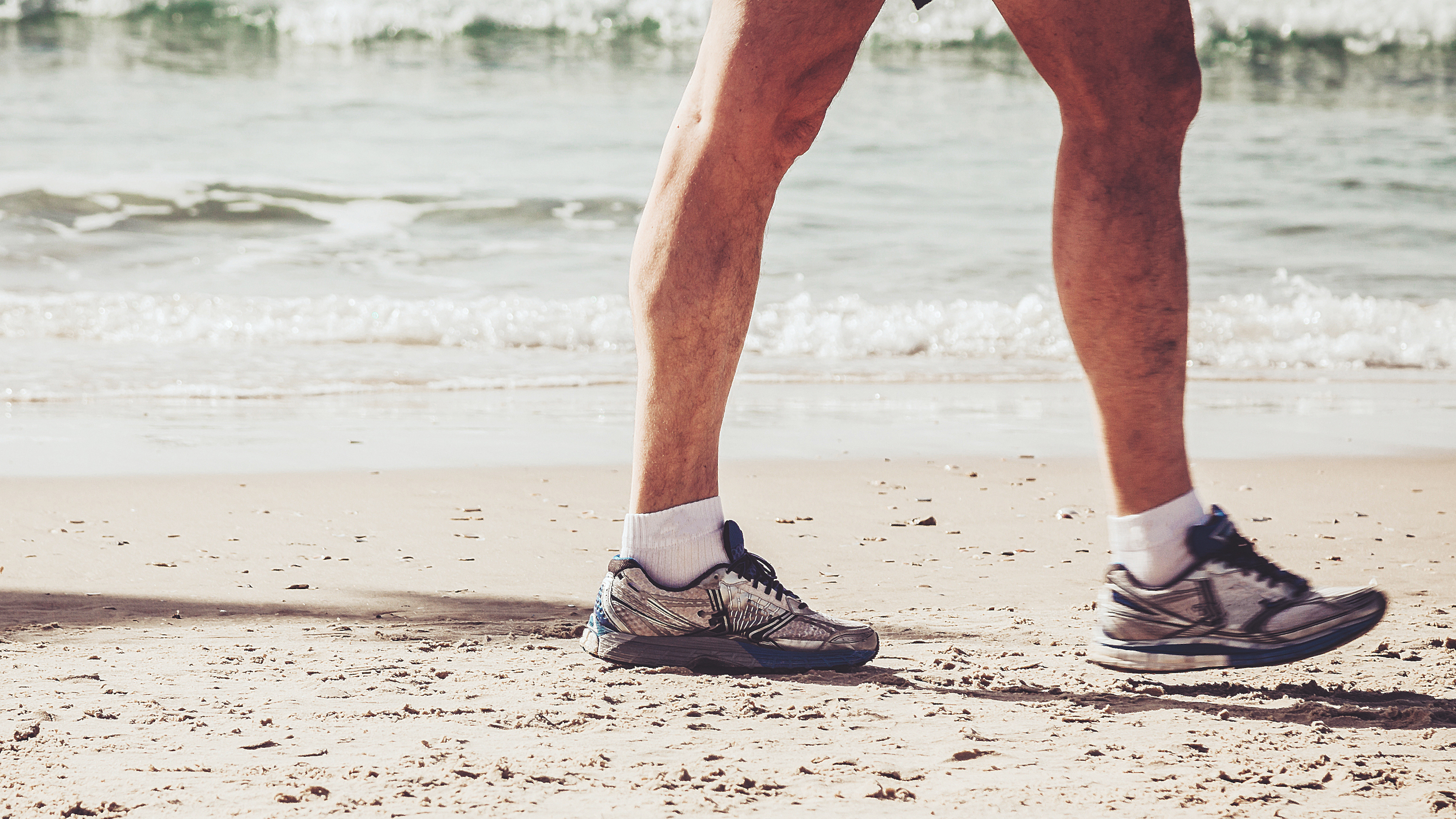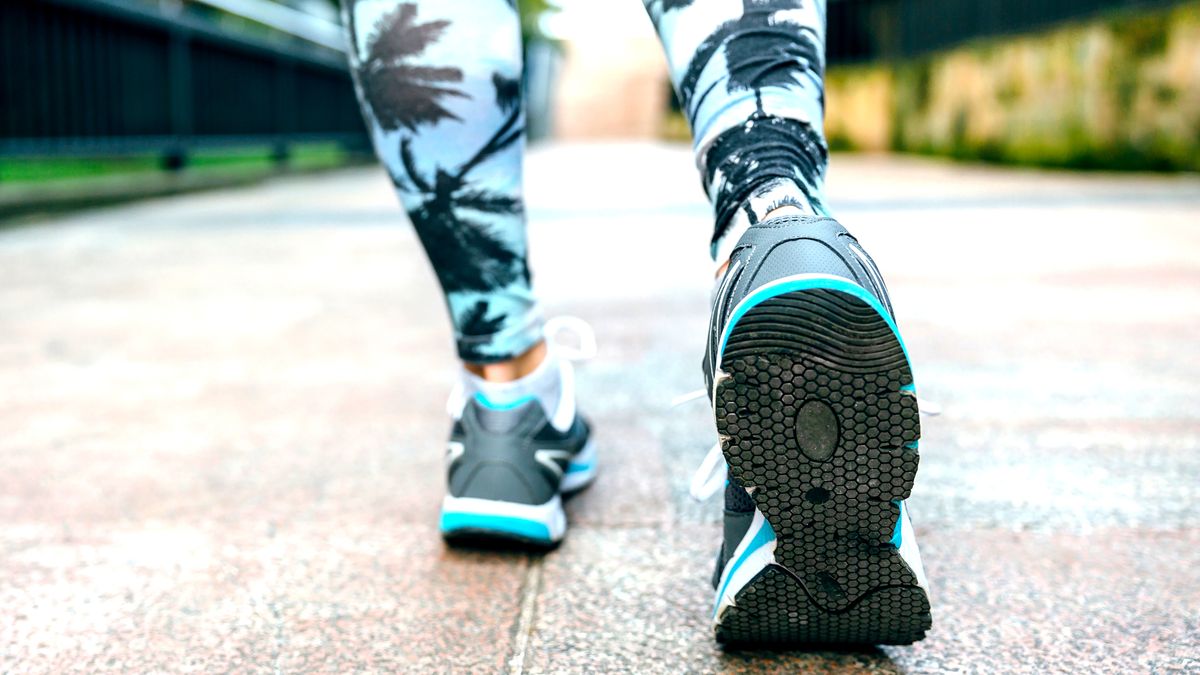It’s no secret that walking does wonders for the mind and body but did you know that walking backwards is also great for your health? I was dubious myself when I first stumbled across the phenomenon.
As a keen runner, I’m always looking for new exercises to strengthen my knees and make sure I maintain strength across my whole body. But I wasn’t expecting to be told to start walking backward.
After looking into the benefits of walking backward I reached out to James Barr, a personal trainer at Fitness First with 10 years experience in the industry and holds a Masters in Sports and Exercise Science. Here’s everything you need to know about walking backward and whether or not you should give it a go.
James Barr
With over 10 years of experience working in the fitness industry, James started his career at Fitness First in 2013. Not only has he obtained a Masters in Sports and Exercise Science he also teaches industry professionals about skill, performance and other areas of fitness.
What are the benefits of walking backward?
The benefits of just standard walking with one foot in front of the other are abundant. In fact, just 30 minutes of power walking can burn calories, build strength, improve cardiovascular fitness and improve sleep.
But what does backward walking have to offer and is it worth picking up as a form of exercise? Let’s take a look.
Improved balance and coordination
Barr tells us, “Backward walking engages different muscles and challenges your coordination, therefore enhancing your balance and proprioception.”
Proprioception refers to your body’s ability to sense its position and movement in space. When you work on this, things like your reaction time improves.
Strengthens the muscles
According to Barr, “Backward walking targets muscles that are not typically used during forward walking, such as the hamstrings, glutes and lower back. This can lead to better muscle balance and overall strength.”
Contrary to popular opinion, not all muscle is built in the gym. There is no denying that lifting some of the best adjustable dumbbells and using progressive overload training will lead to muscle hypertrophy. However, walking is a great way to tone and build endurance in the lower body and core muscles. If you feel more comfortable sticking with forward walking for now, here’s three walking workouts that build lower body strength.

Reduced impact on joints
Walking backward reduces the impact on joints, which Barr explains makes this form of exercise gentler on the knees and ankles compared to forward walking or running. This is because the motion of stepping backward distributes the forces differently, meaning there is less repetitive stress on the joints.
A study published in the Sensors journal found that the range of motion in both the hip and knee joints is significantly decreased during backward walking. In a forward gait, the heel typically makes initial contact with the ground. Whereas, in a backward gait, the toes touch down first, and the heel may not reach the ground at all. This difference leads to less impact on the knee joints and activates a different set of muscles compared to standard walking.
Enhanced cognitive function
“Walking backward requires heightened attention and concentration,” Barr tells us.
This heightened mental engagement helps improve cognitive abilities such as memory, focus, and spatial awareness. As you move without the usual forward visual cues, your brain will work harder to coordinate your movements and maintain balance. This is what can contribute to improved mental agility and cognitive health over time.
Posture improvement
If you’re a bit of a sloucher then backward walking could be of benefit. It might not be as relaxing as other posture improving exercises such as yoga or Pilates but the movement can improve posture by promoting proper form and engaging the core muscles.
How to start walking backward?

If you are one of the majority, then it’s likely you haven’t spent much of your life walking in the opposite direction you are taught to from birth. So as with any new form of exercise, it’s important to start slowly when introducing this type of exercise.
Here’s how Barr suggests easing into backward walking. “You can slowly do it by bringing it into a warm-up, practice walking backwards for a few minutes, then gradually start to introduce backwards walking intervals into a cardio day.
For example, alternate between walking forwards and backward for set durations or distances. Start with shorter intervals and gradually increase the duration or intensity as you become more comfortable with the movement.”
If you fancy a challenge then Barr says you can even incorporate backward walking into your strength training.
“However, adds Barr, “With any new exercise, start slowly and gradually increase the intensity and duration.”
It’s always important to consult a healthcare professional if you have any underlying health conditions or concerns before incorporating backward walking into your fitness regime.
Is it better to do it on a treadmill or outdoors?
“It can be done on both,” but Barr notes, “If you’re starting out, it’s probably best to start on a treadmill to get used to it, before going outside.”
If you are going to try it outdoors, take extra precautions to keep yourself safe. Factors such as uneven terrain, weather conditions, and potential obstacles like traffic or pedestrians can increase the risk of slips, trips, or falls.
A good pair of shoes will also be your friend so be sure to check out our guide to the best Sketcher shoes if you need some comfy footwear for your walking adventures.








:max_bytes(150000):strip_icc()/roundup-writereditor-loved-deals-tout-f5de51f85de145b2b1eb99cdb7b6cb84.jpg)


